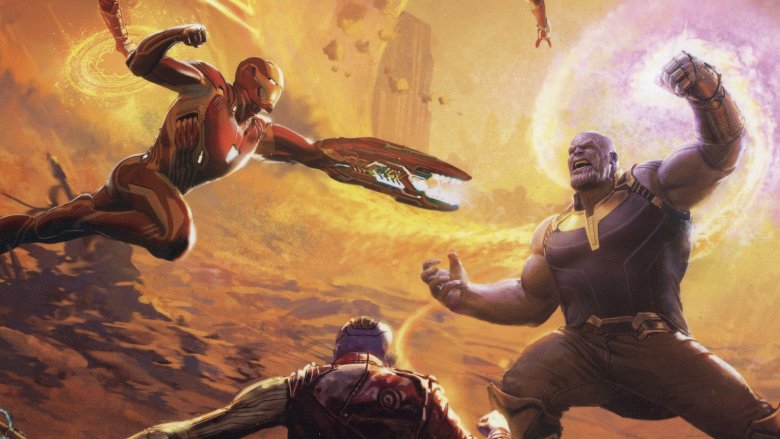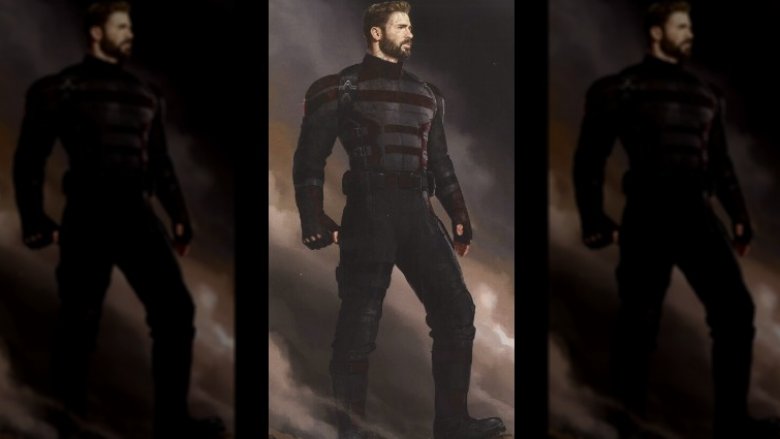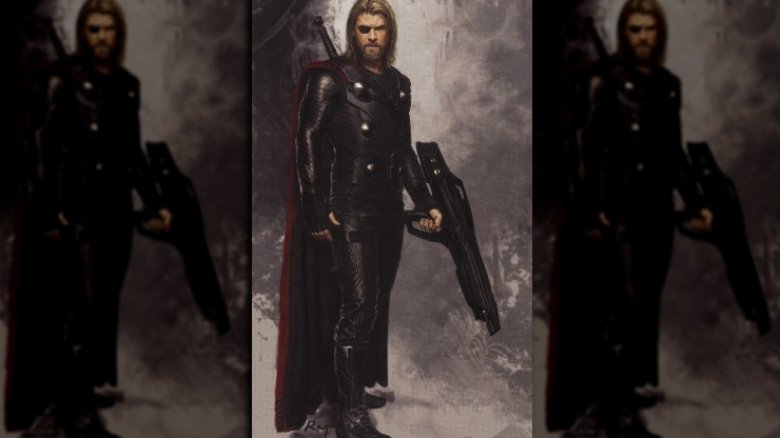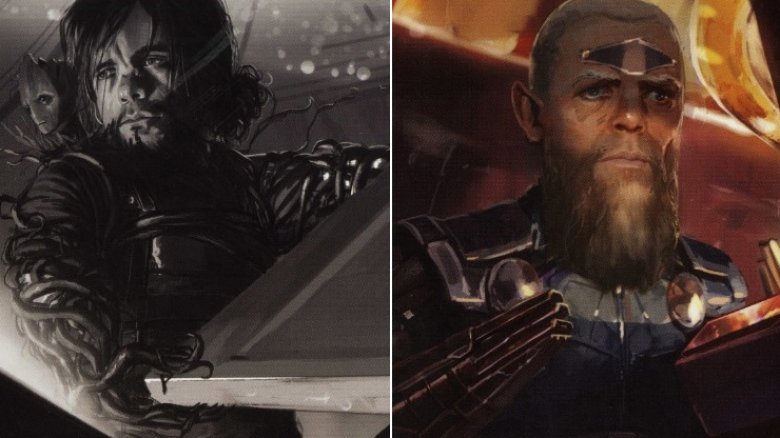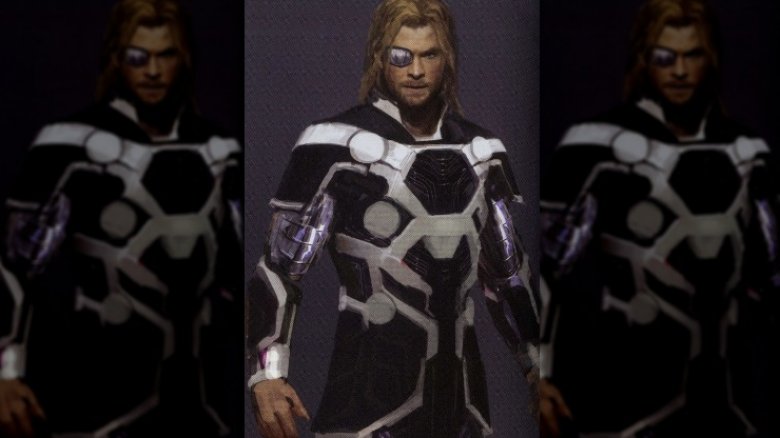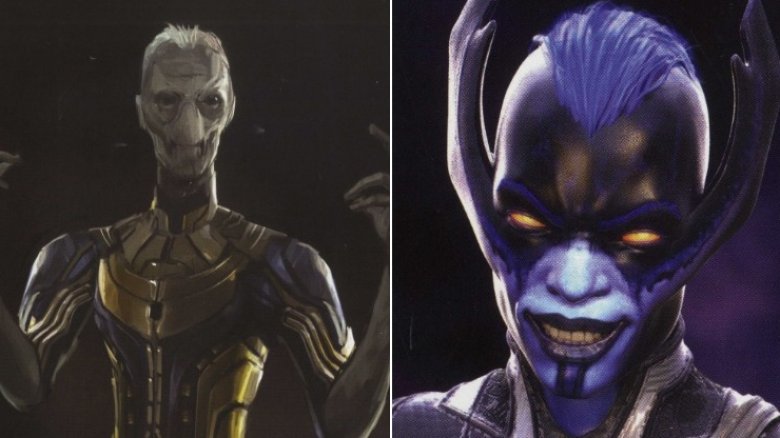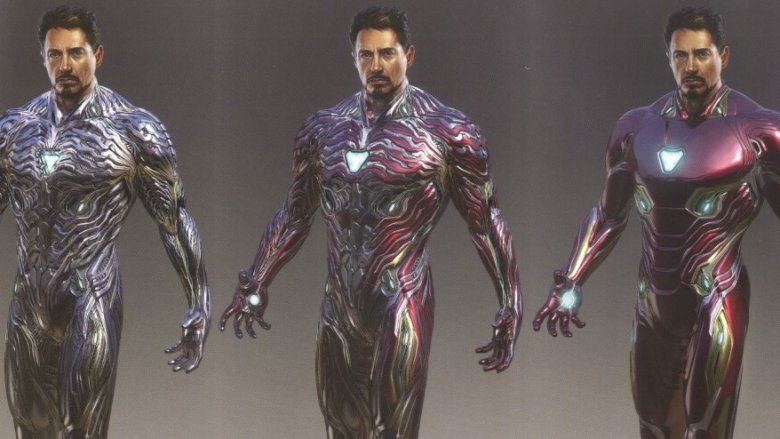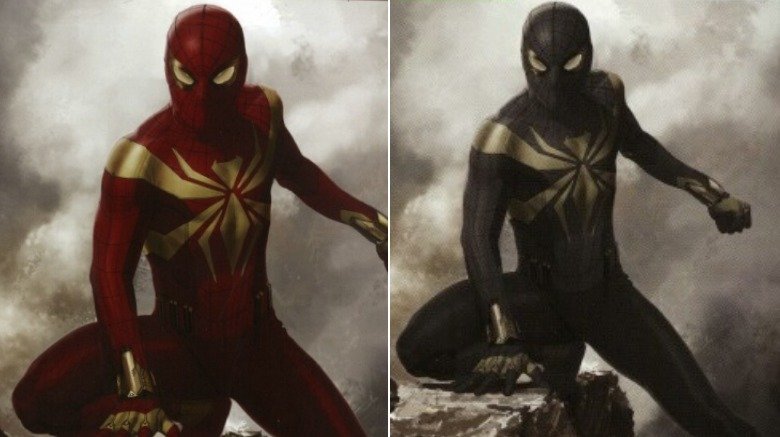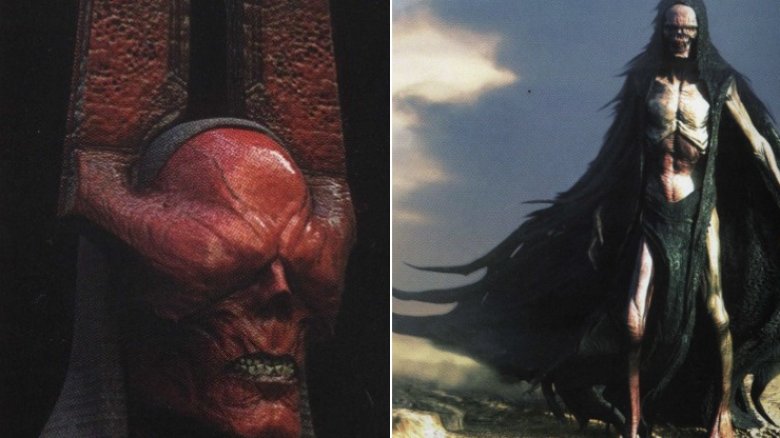Infinity War Concept Art That Will Change How You See The Movie
We may receive a commission on purchases made from links.
The Marvel Cinematic Universe marked its tenth year with the release of Avengers: Infinity War. It was the event that the movies had been building to for most of that decade, assembling just about every character from the previous 18 films in the battle for the Infinity Stones, the powerful weapons they had been setting up all along. That's a lot riding on one movie, and Marvel's development team had a titanic task in paying it all off.
The studio's success in translating their comic book worlds to the big screen doesn't happen overnight, even after ten years. Filmmakers need visual representations of their ideas in order to get their whole crew on the same page, and this is usually a process of trial, error, and exploration. Like any big-budget sci-fi or fantasy spectacle, Marvel's movies begin to take shape in the hands of designers and concept artists.
Unlike many other movies, however, the MCU has the particular challenge of giving dimension and realism to characters who have already lived for decades as illustrations. Between the panel and the screen is an often-overlooked stage that's an art form all its own. That work is on display in a new book, Marvel's Avengers: Infinity War – The Art of the Movie. While we eagerly wait and wonder about Avengers 4, this book gives us an intriguing look at the Infinity War that might have been.
Cap's U.S. Agent look
However Steve Rogers entered Infinity War, we knew he would be having some complex feelings about his own identity. Civil War ended with him all but shedding the mantle of Captain America, abandoning his iconic shield after the clash that shattered the Avengers and brought him to blows with Tony Stark. His closing speech about his "faith in people" assured us that Rogers was confident in his decision to forge a new path.
The costume Chris Evans wears in Infinity War is a darker-colored variation on his Captain America uniform, with the white star conspicuously ripped out. It's a strong visual indicator that he's the same man with the same principles but new priorities (and a fresh beard). However, It wasn't the first concept the film's design team considered.
U.S. Agent is a codename used in several Captain America comics in which Steve Rogers feels too conflicted to use his patriotic identity. It's a bit of a long and convoluted history, but a black-and-red variation of the classic suit is a hallmark of such stories. Marvel Studios' head of visual development Ryan Meinerding experimented with this look for Rogers during Infinity War's concept phase.
Thor's got a gun
The Avengers are all over the emotional spectrum when we catch up with them in Infinity War, but none are feeling lower than Thor. Ragnarok was a cathartic experience for the character, as the conclusion found him at last claiming the Asgardian throne that had eluded him since the opening sequence of his first film. It was a journey that required the God of Thunder to accept loss and learn to let go of his parents, his palace, his eye, and his beloved hammer, Mjolnir. Then, before the main title of Infinity War even drops, Thanos wipes out half of the remaining Asgardians.
A major turning point of the movie finds Thor forging a new weapon all his own to replace the ancient hammer. His new axe, Stormbreaker, would be forged in the same star as Thanos' Infinity Gauntlet, with Groot offering up his arm as a handle. This cements Thor's new alliance with the Guardians of the Galaxy, as well the spirit of camaraderie he has developed over his entire character arc. At some point, though, Meinerding rendered Thor holding some sort of laser rifle, which he perhaps would have gotten from his new friend Rocket Raccoon. It's just as well that Thor never ended up wielding a gun — that's really more of a Skurge thing.
Alternate Eitri
One of Infinity War's major surprises was the part played by Peter Dinklage. The Game of Thrones star was known to be joining the massive cast of the crossover, but his exact role was kept under wraps until the movie premiered. We eventually found out he was playing Eitri, master of the forge of Nidavellir. Eitri is the last survivor of his people, the rest having been wiped out by Thanos after they created the Infinity Gauntlet for him. Thor must convince him to make one last weapon in the hopes of thwarting the Mad Titan.
The creation of Stormbreaker marks a major turning point in Thor's character arc. Now that he's lost the hammer that represented his Asgardian birthright, he must create a weapon of his own, and he needs to rely on his new friendships to do it. Groot, who is a sullen, angsty teen tree for most of the movie, sacrifices a limb to make the mighty axe's handle.
"The original scene in the script just said 'Groot helps Eitri,' giving me a lot of freedom to come up with something interesting and unique," revealed concept artist John Straub. Straub imagined a scene in which Groot formed a sort of exoskeleton and acted as Eitri's arms. Anthony Francisco, meanwhile, offered up a take on Eitri that was somewhat more aged and austere than the disheveled survivor Dinklage became in the finished film.
Thor fights for the Users
The Marvel Cinematic Universe has reached a prolific fever pitch, now cranking out multiple movies a year to meet the demand of an ever-booming box office. This presents the studio's design department with some interesting challenges. Each film must now get through its conceptual phases before the one before it has even been shot. With characters constantly coming and going from each other's movies, the filmmakers sometimes have to make educated guesses about the status of any given Avenger.
This was certainly the case with Thor, who starred in Ragnarok a mere five months before Infinity War was due in theaters. "Because that was all being designed around the same time, I had to imagine what he might look like going through all that," said concept artist Wesley Burt. The team took several passes at Thor's potential wardrobe, but one of the most interesting attempts is this startling, futuristic black and white armor designed by Anthony Francisco. It's like something straight out of Tron's grid.
Cheerful children of Thanos
While most of the major players in Infinity War were already introduced in previous films, the opening sequence brings an important new team of fresh faces to the fray: the Children of Thanos. Known in the pages of Marvel Comics as the Black Order, this phalanx of cretins — Ebony Maw, Proxima Midnight, Cull Obsidian, and Corvus Glaive — act as heralds to the Mad Titan. They announce his arrival and carry out his will on each unfortunate world that falls into his grasp.
Since this quartet had not yet been seen onscreen, Infinity War's design team had more freedom in their interpretation than they did with the hero characters. In particular, they experimented with how expressive to make these oh-so-goth aliens. "His arms are usually folded in some way, but his hands are always very expressive," Ryan Meinderding said of Ebony Maw, "so I was trying to work that stuff in where his hands were more oversized, and creating almost enough tightness to his costume that it felt restrictive." Some of the early passes at Thanos' children find them a little more... smiley than the stern figures they became in the movie, particularly these takes on Ebony Maw (by Rodney Funtebella) and Proxima Midnight (by Tully Summers).
Iron Man's Bleeding Edge
It seems like an unwritten rule of the Marvel Cinematic Universe that Tony Stark must don at least one new suit of Iron Man armor every time he appears. Infinity War is no exception, as he deploys the "Bleeding Edge" armor as soon as the Children of Thanos arrive in their Q Ships. The suits have been growing increasingly high-tech and intuitive ever since Iron Man 2's suitcase armor, but the Bleeding Edge represents a whole new frontier, utilizing nanotechnology to create a form-fitting, hyper-responsive second skin that forms around Stark at his command.
The movie doesn't dwell on just how the Bleeding Edge suit works (there's hardly time for that when Iron Man is just one of a galaxy of heroes), but Marvel's design team put no small amount of thought into its construction. "It's actually forming all the anatomical hairs underneath," explained concept artist Phil Saunders, who prepared a layer-by-layer breakdown of the Bleeding Edge's anatomy. "There's a sort of neurological layer and a circulatory system layer that gets formed, and then a layer of musculature."
It's probably good that the movie doesn't linger on this in-between phase of the armor — it bears a disconcerting resemblance to the off-putting flayed muscle look of 2011's Green Lantern.
Iron and gold
Comic book history is so rich and deep that even costumes can have long, complex legacies of their own. Such is the case with the Iron Spider, a variation on Spider-Man's identity occasionally adopted by Peter Parker. Part of the fallout from Marvel's Civil War event (which was quite different from the movie of the same title) was an alliance between Stark and Parker that resulted in a technologically advanced spider suit equipped with onboard computer systems and robotic legs.
Given that Iron Man turned out to be so crucial to Spider-Man's long-awaited introduction to the MCU in Civil War and Spider-Man: Homecoming, it was only a matter of time before the Iron Spider suit found its way to the screen. The version deployed in Infinity War is basically a somewhat shiny variant on the standard red-and-blue motif, but the development team tried a red-and-gold iteration that stuck very close to the Civil War comics. There was also a black version, though that one perhaps bore too much resemblance to the symbiote suit seen in Spider-Man 3. "I pitched a number of other suit designs that were closer to the comics," Ryan Meinerding explained, "but it felt like people were reasonably willing to go in slightly new directions."
Scary skull
Infinity War's most closely-guarded secret just may have been the identity of the "Keeper of the Stone." In his quest for the Soul Stone, Thanos must travel to the planet Vormir and confront the guardian of the gem that's hidden there. In a twist that shocked longtime Marvel fans, this guardian is revealed to be none other than the Red Skull, last seen getting banished to another dimension by the Tesseract (and the Space Stone inside it) at the end of Captain America: The First Avenger.
It goes without saying that the Skull has been subjected to some intense cosmic punishment since then, and this fired the imaginations of Infinity War's concept artists. "The idea of really hollowing him out and embracing the more horrific aspects of his look was something I took a lot of delight in exploring," said Ian Joyner, and it shows. The team's takes on the new Red Skull run the body horror gamut from an austere being (designed by Jerad Marantz) that wouldn't be out of place in a Guillermo del Toro film, to Constantine Sekeris' vision of a cloaked wraith that would be very much at home on an Iron Maiden album cover.
